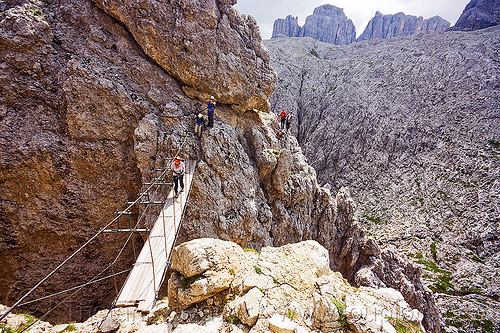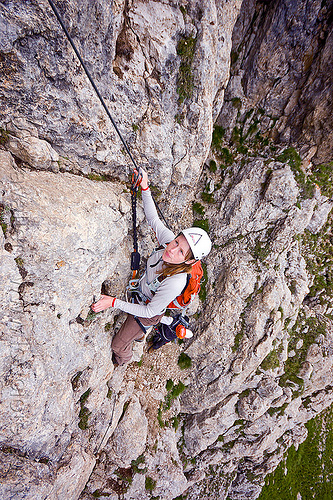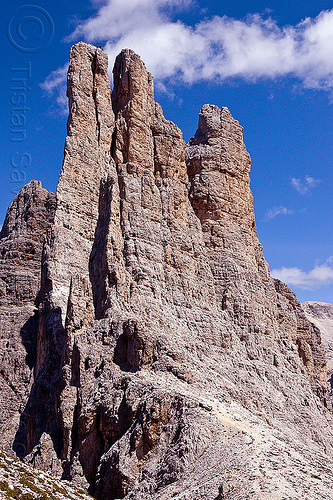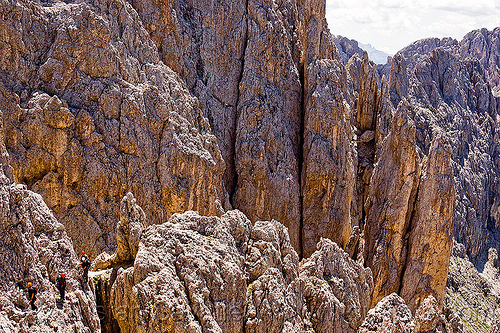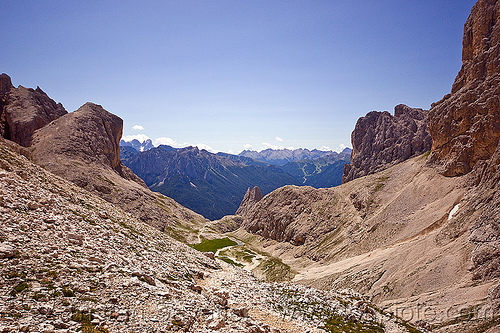dolomites mountains (italian alps) - 87 photos
Photos taken in the Dolomites (Dolomiti), in the Italian Alps.
The Dolomite region, because of its many high cliffs, is famous for Via Ferrata's, which are climbing routes protected by steel cables bolted to the rock.
For more information about Via Ferrata, go to en.wikipedia.org/wiki/Via_ferrata.
The Dolomites constitute the eastern part of the Alpine Mountain Range, and because it is so unique and beautiful, it is on the UNESCO World Heritage List.
And indeed, the Dolomites offer up a magnificent panorama: mountains constructed with walls of rock, ice caps, karst systems, unbelievably high spires, towers and pinnacles – mountains molded and shaped by the elements, and where the cultures of Italy and Germany meet and intertwine.
The Dolomites take their name from the French geologist Dieudonné Dolomieu, who discovered the properties of the dolomite, a hard, chalky rock that is rich in the mineral dolomite, highly present in this mountain system.
This entire process can be explained by the fact that up until 250 million years ago, these mountains were a mass of shells, corals and algae under the sea. They emerged only 70 million years ago. It is this combination of circumstances that make these structures, rich in Mesozoic fossils, the amazing geological formations that they are.
For more information, go to en.wikipedia.org/wiki/Dolomites.























